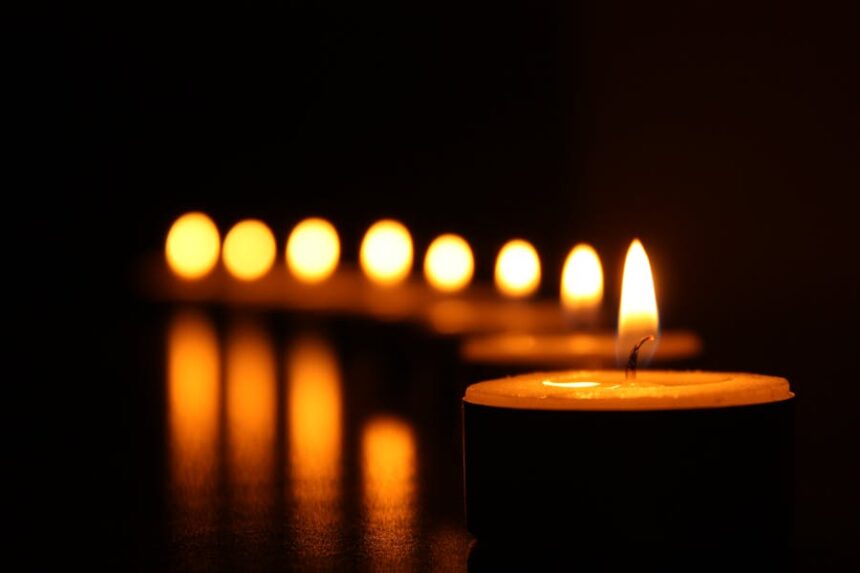Candles have long been a staple in both practical and decorative settings. From setting a relaxing mood to adding a touch of warmth to home décor, the right candle can completely change the feel of a room. Whether you’re looking to enhance your space, prepare for an event, or simply enjoy a little ambiance, understanding the types of candles available will help you choose the perfect one. Some styles, like pillar candles, stand out for their timeless look and versatility, making them a popular choice for home decorators and event planners alike.
But with so many options in the market, varying by shape, wax type, wick design, and burn time, it can be challenging to know where to begin. The key is to match the right candle type to your intended use.
Classic Candle Types and Their Features
Candle types are often defined by their form and function. Each has a specific role to play, and their differences affect everything from scent throw to how long they burn.
Container Candles
These are poured into glass jars, tins, or other heat-resistant containers. They’re known for being clean-burning and easy to use since the wax doesn’t spill or drip. Most scented candles on the market fall into this category. They’re ideal for everyday use, especially in bathrooms, bedrooms, or living rooms.
Taper Candles
These long, slender candles are commonly seen on dinner tables and formal events. They usually require a candle holder and are prized for their elegance. They have a moderate burn time and are often unscented, which makes them perfect for occasions where food or conversation is the main focus.
Pillar Candles
These are thick, free-standing candles that don’t require a holder with sides. Pillar candles are often used in decorative groupings or placed in hurricane glass to amplify their effect. They come in various heights and widths, allowing for visual layering. Due to their slow burn and size, they’re well-suited for extended use during events or as part of seasonal décor.
Tealight Candles
Small and compact, tealights are typically housed in thin metal or plastic cups. They’re mainly used as accent lighting or placed in specialty holders, lanterns, or under essential oil diffusers. Their short burn time and low cost make them great for one-time use or scattered lighting effects.
Votive Candles
These resemble short, squat versions of taper candles and are often used in religious or ceremonial settings. When burned in proper holders, they liquefy completely, providing a steady, warm glow. They’re slightly larger than tealights and can be either scented or unscented.
Wax Materials and Their Benefits
Not all candles burn the same way. The type of wax used plays a major role in scent throw, burn time, and environmental impact.
Paraffin Wax
This is the most widely used candle wax due to its affordability and scent throw. It holds fragrance and color well but may produce more soot and contain petroleum byproducts.
Soy Wax
Made from soybean oil, soy wax is a cleaner-burning, renewable option. It typically burns slower than paraffin and produces minimal soot. It’s a favorite for eco-conscious consumers who still want strong scents.
Beeswax
Beeswax candles are natural, hypoallergenic, and known for their long burn time and subtle honey scent. They’re often more expensive but are considered premium quality due to their purity and sustainability.
Coconut Wax
Relatively new in the market, coconut wax offers a clean, long-lasting burn. It’s soft, creamy, and blends well with other waxes. It also carries fragrance efficiently.
Palm Wax
This is another plant-based alternative, producing a crystalline or feathered look. While beautiful, concerns over palm farming practices have made this option less popular among environmentally-conscious consumers.
How Scent Impacts Candle Choice
Fragrance is often a deciding factor when selecting a candle. However, the purpose and location of use should guide your decision.
For small spaces like bathrooms or offices, go for mild scents like lavender or green tea. These aren’t overpowering and promote calm. In larger rooms, bolder fragrances such as sandalwood, cinnamon, or citrus can fill the space more effectively.
Unscented candles are often chosen for dining areas to avoid interfering with food aromas. They’re also ideal for ceremonies or religious settings where fragrance may be inappropriate.
Choosing Candles by Burn Time and Usage
Not all candles are designed to burn for hours. If you’re hosting a long event or want to avoid constant replacement, burn time should be a key factor.
Pillar candles and container candles generally burn the longest due to their large wax volume and slower melt rate. Taper and votive candles offer moderate durations and should be burned with proper holders to avoid mess. Tealights, while charming, are best reserved for short bursts of ambiance.
Additionally, look for double or triple-wick options if you’re hoping to quickly fill a room with scent or increase light coverage.
Decorative Appeal and Placement
Candles do more than provide light, they enhance the visual appeal of your space.
For centerpieces or mantel arrangements, mix and match candle heights and widths to create dimension. Consider color coordination with seasonal décor or event themes. Pillar candles work beautifully in clusters, either on mirrored trays or inside lanterns, to reflect light.
Wall sconces, chandeliers, and candelabras provide elevated spots for taper candles. Meanwhile, tealights shine in small holders scattered across tables or placed inside frosted containers for a diffused effect.
Floating candles can transform bowls of water into elegant accent pieces, especially when paired with petals, glass beads, or seasonal items.
Safety and Practical Tips
Before lighting any candle, safety should always be top of mind. Trim the wick to about a quarter inch to prevent excess smoke. Always place candles on heat-resistant surfaces away from drafts, children, and pets.
Avoid burning a candle for longer than its recommended maximum (usually 4 hours) to prevent wick instability or container cracking. Never leave candles unattended, even if they seem stable.
For reusable containers, make sure the material can withstand heat. Mason jars and ceramic holders are usually safe. Avoid thin glass or plastic holders not labeled as heat-resistant.
Final Thoughts on Selecting the Right Candle
Choosing a candle involves more than picking a pretty scent. Think about where you’ll use it, how long it needs to burn, and the kind of ambiance you want to create. Consider materials that align with your personal values, such as opting for soy or beeswax for eco-friendliness. Pay attention to container styles, burn times, and wax types, and you’ll be far more satisfied with your purchase.




